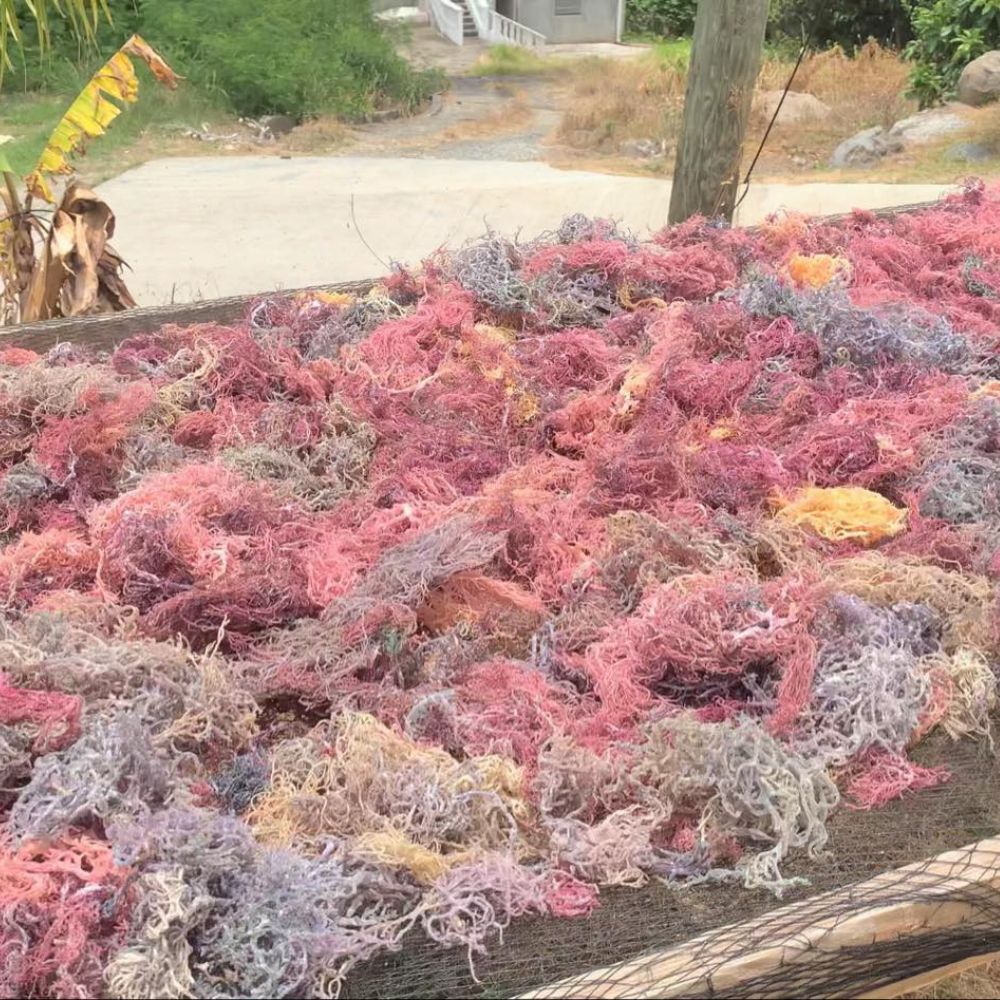If you've heard about sea moss supplements, you might be curious about how they work and whether there are other methods to eat them. This article explores the possible advantages and disadvantages of sea moss, its nutritional value, and its preparation methods.
What is Sea Moss?
Let's start by giving a quick overview of sea moss. A prickly marine vegetable, sea moss is gathered chiefly for use in dietary supplements and as a thickener in processed meals. In the seas of the Atlantic and Pacific Oceans, a variety of seaweed known as sea moss is cultivated and collected. Over 92 vital minerals and nutrients, including iodine, zinc, calcium, potassium, sulfur, iron, selenium, magnesium, silica, and more, are said to be present in sea moss, which endorses good health.
Potential Benefits of Sea Moss
There is a tone of studies on the advantages of seaweed and the relative of sea moss, but not on sea moss specifically. Nevertheless, it is widely regarded as safe for food, and its advantages are similar to those of other seaweeds.
The following are a few of the critical advantages of utilizing sea moss:
1. It might improve thyroid health.
One of the components of a healthy thyroid is iodine, but since your body cannot produce iodine on its own, you must obtain it from nutrition. However, most individuals receive enough iodine via dairy products, shellfish, and iodized salt. Iodine, a vitamin essential for optimal thyroid function, is abundant in seaweeds.
2. It might promote immunity.
In one study, seaweed supplementation enhanced salmon's immune response and immunological regulation. More study is required to determine whether it also supports human immunity.
3. It could enhance intestinal health.
Live bacteria and fiber, which maintain a healthy gut microbiota, may be found in seaweeds.
4. Weight loss.
Fiber-rich foods like seaweed and microalgae might make you feel full and help you avoid overeating. Fucoxanthin, a substance found in seaweed, has been demonstrated in studies to enhance fat metabolism in rats.
5. It might benefit cardiovascular health.
According to several research studies, seaweed lowers LDL (bad) cholesterol and thins the blood, lowering the risk of heart disease.
6. Control of blood sugar.
According to one research, the seaweed ingredient fucoxanthin lowers elevated blood sugar. According to a different study, the seaweed chemical alginate prevents blood sugar rises in pigs.
7. Advantages for fertility.
There is no proof, either in men or women, that sea moss increases fertility explicitly. On the other hand, some individuals utilize it as a conventional fertility therapy.
8. Build muscle and aid in workout recovery
Taurine, an amino acid that aids muscle growth, is abundant in sea moss. Additionally, sea moss contains roughly 6 grams of protein (a mainstay of exercise) per 100 grams. Just remember not to rely only on sea moss to recuperate after exercise! You still need to watch for your healthy food intake, water, sleep, etc.
Should you take sea moss supplements?
According to one research, four grams of sea moss per day is generally safe. You should still talk to your doctor before taking sea moss, especially if you already have hypothyroidism.
It comes in several supplement forms, including the following:
- Capsules
- Gels
- Drinks
- Powders
You can choose the version you want to use. It just comes down to what you like. It would help if you kept in mind that you cannot out-supplement a poor diet, regardless of whether you are only using sea moss supplements or taking many other kinds.
Five steps to use raw sea moss
The scent of sea moss can be removed, but it isn't much you can do about it. The best course of action is to combine it with other tastes, as we have already advised. The taste of the other ingredients in soups, smoothies, or desserts will overshadow the scent of algae coming from the sea moss.
Follow the instructions below to prepare your sea moss to benefit from it properly.
1. Rinse:
Put the sea moss in a strainer and rinse it under cold water to clean it. Doing this will eliminate any salt or residues that could still be present in the sea moss.
2. Soak:
Next, soak the sea moss that has been cleaned overnight in a dish of filtered water. We suggest adding half a lemon or lime juice if you genuinely can't handle the stench. While the sea moss soaks, this will reduce the taste and smell of algae. Keep topping off the water for outstanding results while your sea moss soaks since it can expand.
3. Rinse Again:
Put the sea moss in a colander and rinse it in cold, filtered water after letting it soak for the night. Make sure to rinse the sea moss in the water properly. The sea moss may have lightened in hue at this point.
4. Boil:
When you boil the sea moss, you may start to soften it and make it simpler to combine in the next step. You must put filtered water in a pan and heat it until it boils. Boil the sea moss for around 25 minutes after adding it. You may now increase the amount of lemon or lime in the water. It will contribute to the sea moss smell being further diminished.
5. Blend
After the sea moss has cooled, add it to the blender. Aim to mix at a medium to high speed for the most excellent results. A thick gel-like consistency should characterize the final product. When ready to use, pour it into sealed bags and store them in the refrigerator.
Final Verdict:
You should include seaweed in your diet. A wide range of intriguing and unique types are high in nutrients but low in calories.
Almost everyone may benefit from the significant amounts of fiber, healthful fats, and plant components found in seaweed. The best aspect is that seaweed is adaptable; you can consume it as a snack, as a dish component, in shakes and smoothies, or as a supplement.

